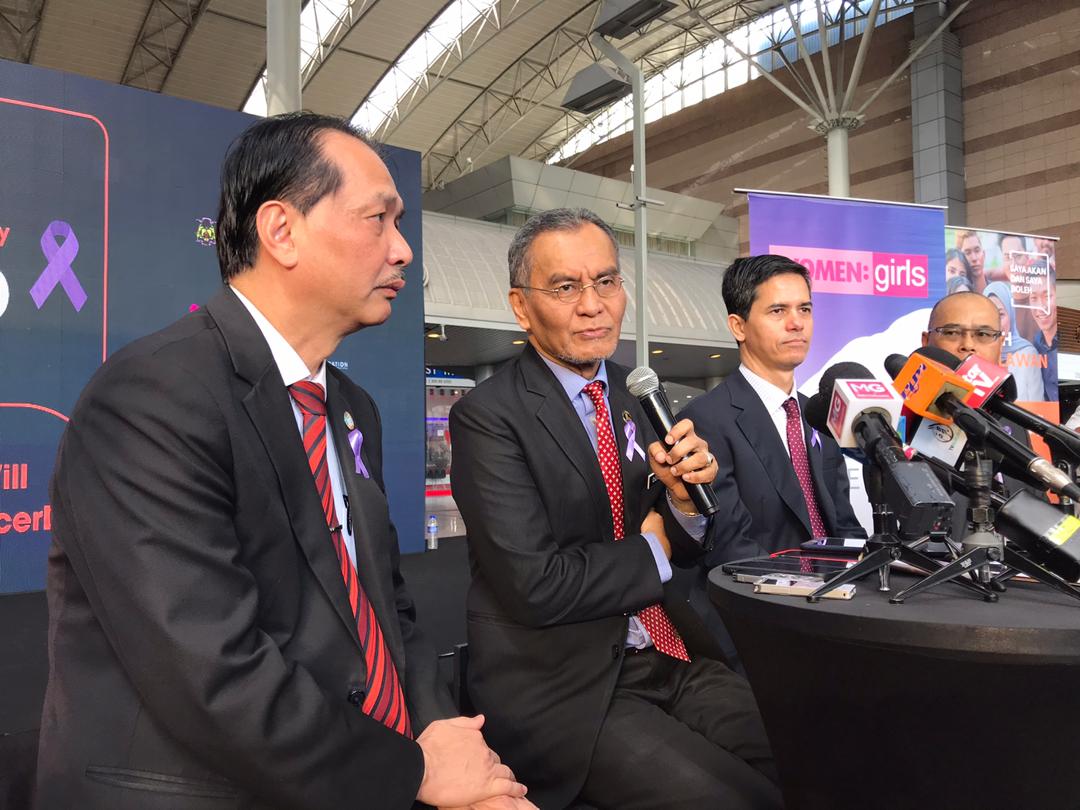KUALA LUMPUR, Feb 4 — There are only 117 oncologists in the country, 2.5 times fewer than the recommended 300 for Malaysia’s 31.6 million population, the Ministry of Health (MOH) said today.
Of the 117, 68 are in the private sector, 35 in MOH hospitals, and 14 in universities, Health Minister Dzulkefly Ahmad said.
Dzulkefly said continuous efforts are ongoing to ensure that more oncologists are trained and available, noting that it is not easy to produce oncologists in Malaysia.
“We will keep harping on this, and we’re getting help from the private sector as well, by way of funding scholarships and what not,” he told reporters after launching World Cancer Day 2020 at KL Sentral here.
“We are doing a catch up over all these indices, these numbers of specialists, the population, doctor’s population, back-to-doctor’s population, are all on my agenda to catch up,” he added.
Currently, he said, existing Master’s graduate programmes in the country produce an additional 12 to 15 oncologists a year, while the parallel pathway programme for oncology specialisation produces two candidates yearly. About 17 new oncologists are produced yearly.
Apart from this, sub-specialties are also producing oncologists, he added, in areas such as gynaecologic oncology (38 yearly), orthopaedic oncology (13), haematological oncology, (18), and paediatric oncology (15).
Rough global estimates, however, show that the ideal number of oncologists is one per 100,000 population or 10 per million. So, about 300 odd oncologists are needed for Malaysia’s population.
Dzulkefly said MOH will be more than happy to reach the 300: 30 million population size ratio, but noted that the benchmark for identifying specialist-to-population ratios by the World Health Organization (WHO) is linked closely with the country’s economic status.
“There’s no such thing as ideal, but that’s our benchmark (one:100,000), as an upper (middle) income economy,” he told a press conference after launching the event.
Health director-general Dr Noor Hisham Abdullah said efforts are ongoing to promote working with the National Cancer Institute, which MOH hopes will encourage doctors to pursue careers in oncology.
“And, unlike surgery, for example, most of the patients walk alone and oncology is very challenging, emotionally, and as well as the workload and et cetera,” he said at the same press conference.
“So, our target, (for) the Ministry of Health… is to achieve at least 10 oncologists for one million population, that is our ideal, but then again, now we are far away from the figures that we dream off.”
CodeBlue previously reported that Sarawak has four times fewer oncologists than the recommended oncologist-to-population ratio of 24:2.47 million. It only had six in 2017.
Sew Boon Lui, president of the Society for Cancer Awareness and Advocacy Kuching (SCAN), also said that the Sarawak General Hospital (SGH) is the only public hospital in the whole state — which is about the size of Peninsular Malaysia — with its own oncology department.
Dzulkefly’s comments today come after the launch of the Malaysian National Cancer Registry Report 2012-2016, which reported 11 per cent new cancer cases, and an increase of about five percentage points in late-stage cancer detections.
Earlier, Dzulkefly said while the development of oncological drugs has been laudable with the introduction of newer agents like targeted therapies, procurement of these treatments is costly.
He also said the government is committed to reducing by one-third premature mortality from non-communicable diseases such as cancer and diabetes by 2030, by means of tobacco cessation, obesity reduction, improving screenings and early detection, among others.








